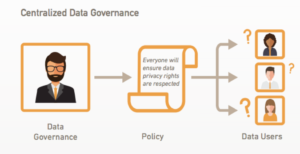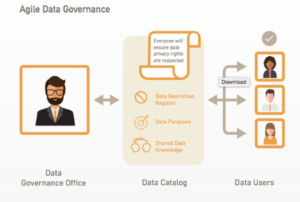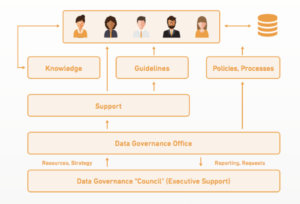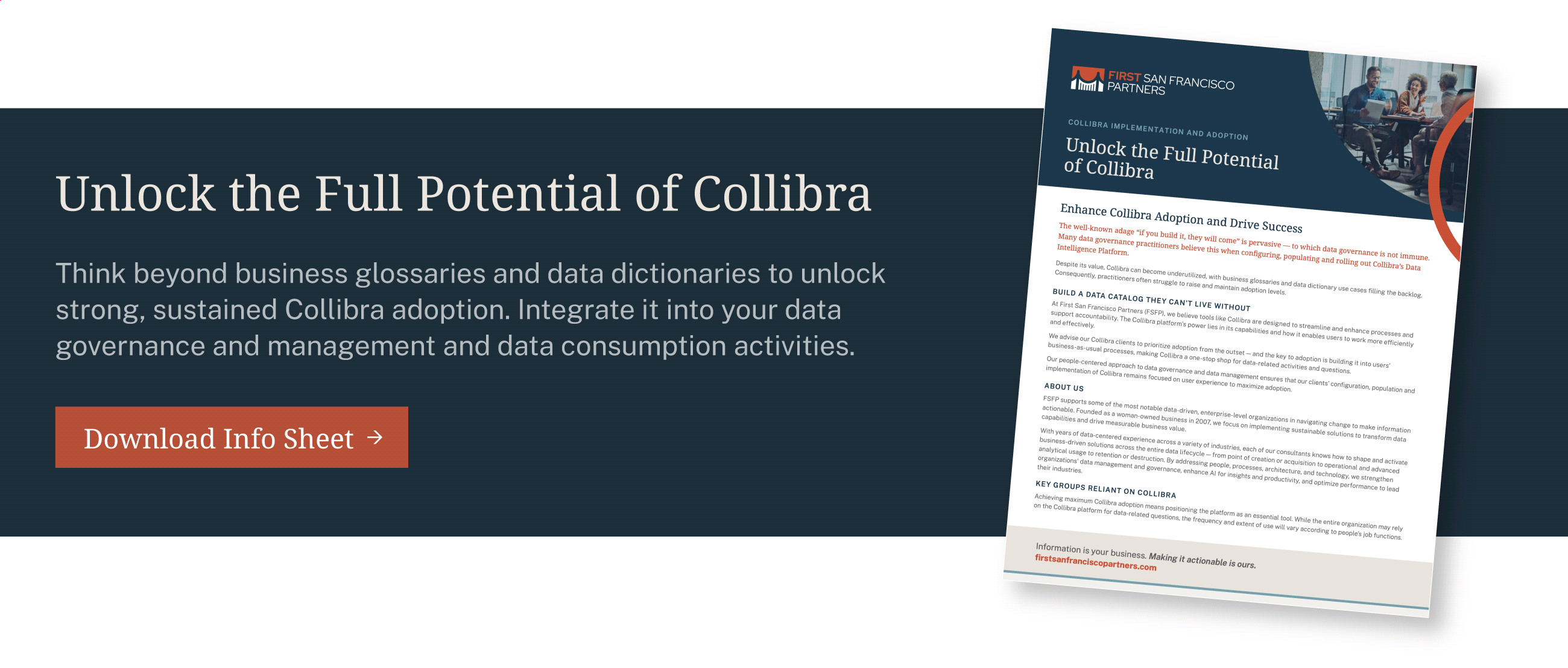The approach to data governance must fit the needs of the organization. To ensure people can adopt new processes easily, they must be tailored to be as understandable, easy to follow, and impactful as possible.
Traditional and Agile Data Governance
Traditional data governance is defensive and driven top down with an emphasis on risk mitigation. A centralized Data Governance Office takes leadership from executives, develops policies and processes, and then spreads them to the rest of the organization. Because the centralized approach only takes into consideration executives, there is a limited understanding of the needs of people who work directly with data.

As data governance in companies has evolved, many organizations use an agile approach to drive decision-making. Agile data governance programs push decision-making closer to direct data users instead of just leaving decisions up to executives. This approach is more flexible with an emphasis on providing support and guidelines rather than rigid policies. Staff will feel more empowered to make data-related decisions because they have more information at the point of usage, building trust and understanding.
The use of a data catalog like Collibra enables two-way communication. The Data Governance Office can use the data catalog to provide support to users, using the data catalog as a venue to explain policies and guidelines. The data catalog also helps ensure the right people are given the right access to the data they need when they need it. And, as the name suggests, the data catalog builds a collection of knowledge to support appropriate data usage.
Data users themselves can use the catalog to access information and guidelines about the data and contribute to that knowledge. The agile approach is focused on developing solutions for data needs and supporting data users. The Data Governance Office still makes policies, but they also provide open communication and training on how to deal with data needs and appropriate access to enhance metadata.
Balancing Approaches
Most organizations are not completely centralized or completely agile in their approach to data governance, and that is okay. The key is creating a balance between the two approaches, and selecting things from each that fit in your organization.
Some best practices in combining these two include:
- Establish rules to address concerns and regulations around data.
- Ensure the development of policies and processes are done as close to the end user as possible.
- Develop a collaborative process between end users, the Data Governance Office and other stakeholders.
- Provide resources, communicate overall strategy, and support enforcement.
- Expand the Data Governance Office to a true service within the organization.
- Use technology to support collaboration.

Thank you for joining us as we discussed our nine best practices for driving enterprise Collibra adoption. More information is available on our blog and website.
View more Collibra Best Practices article series.
View more Collibra Best Practices article series.



